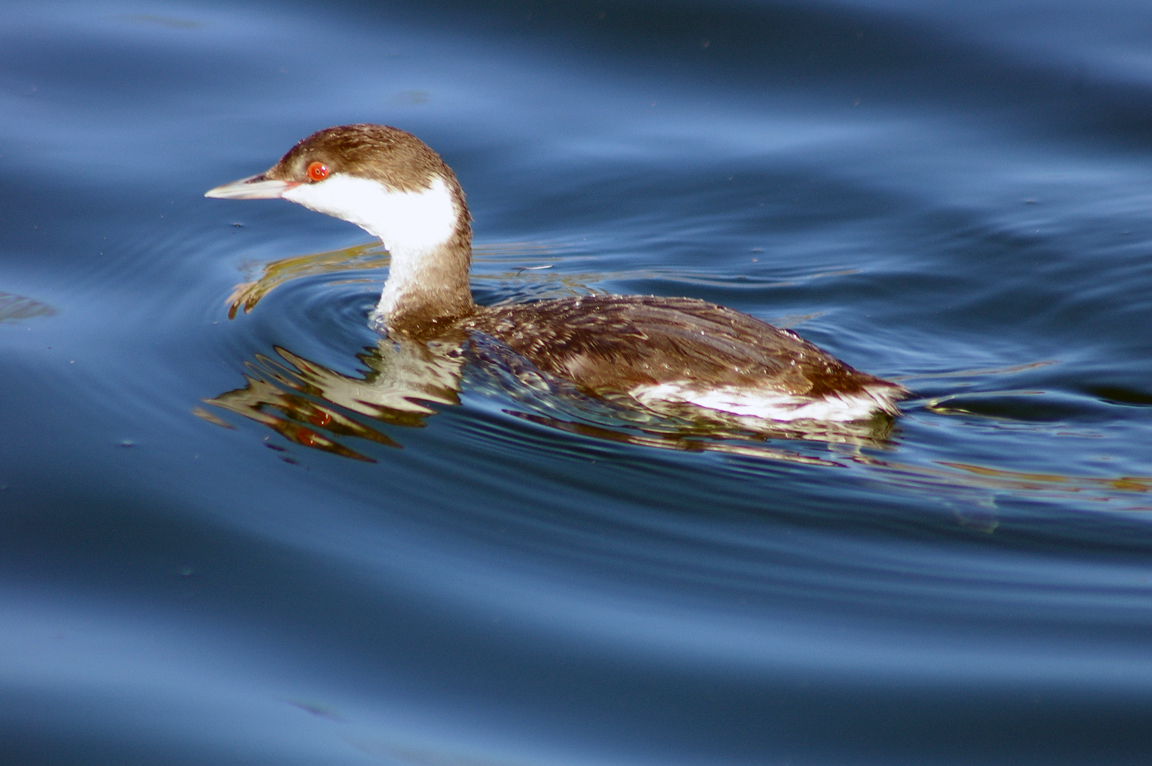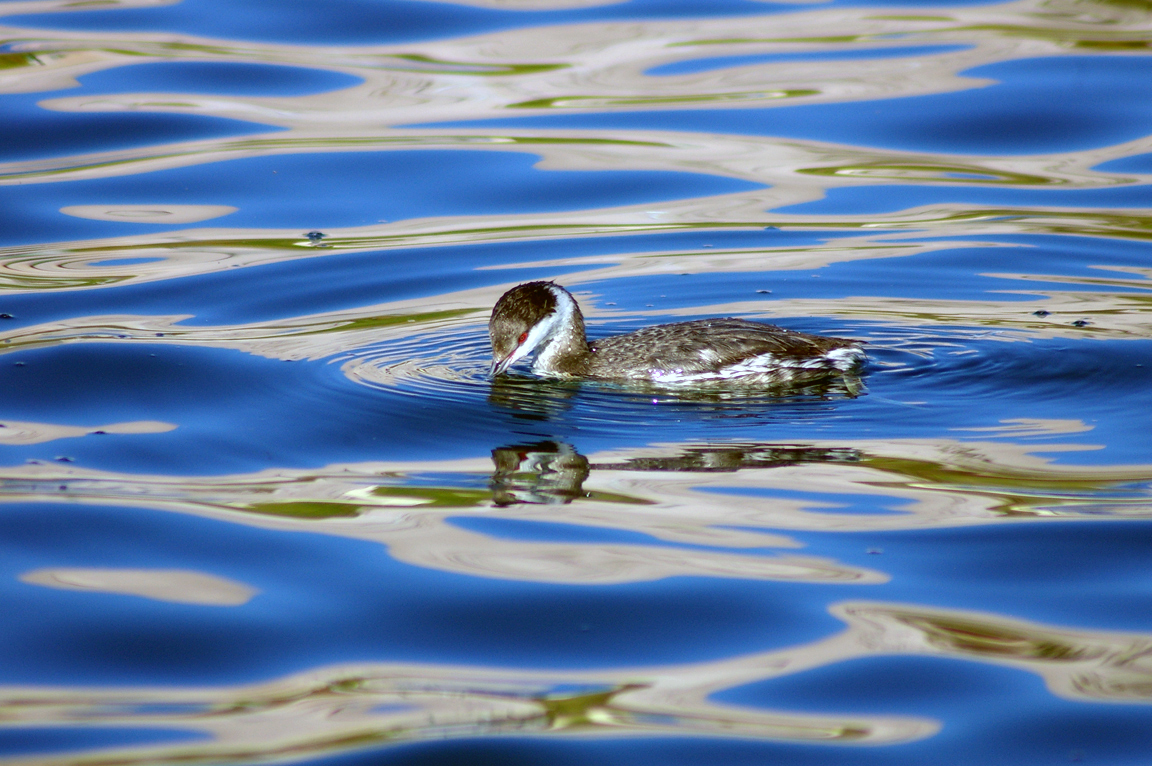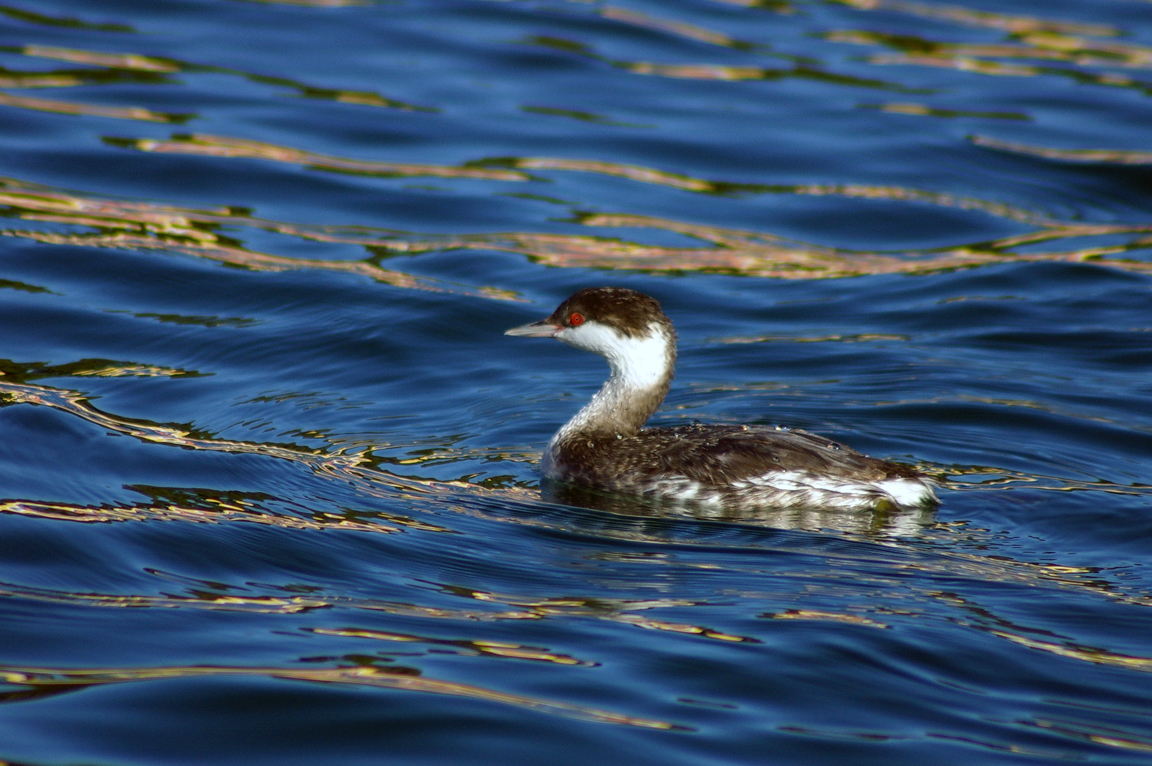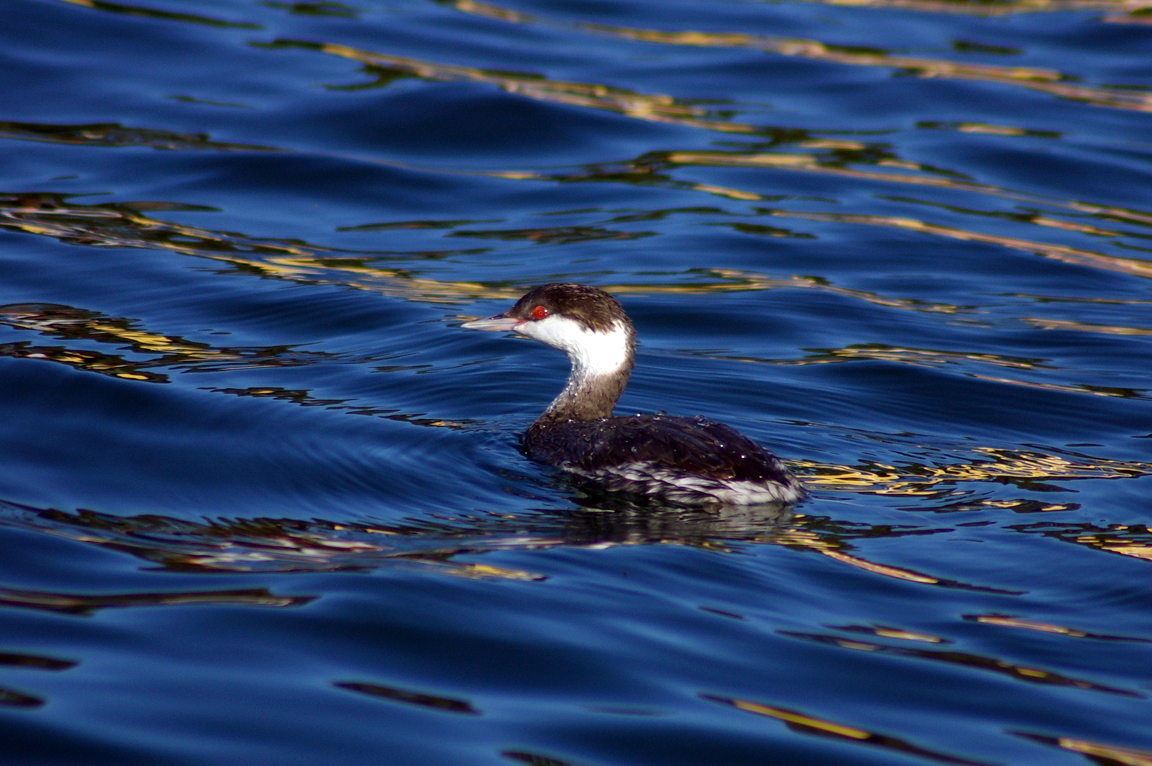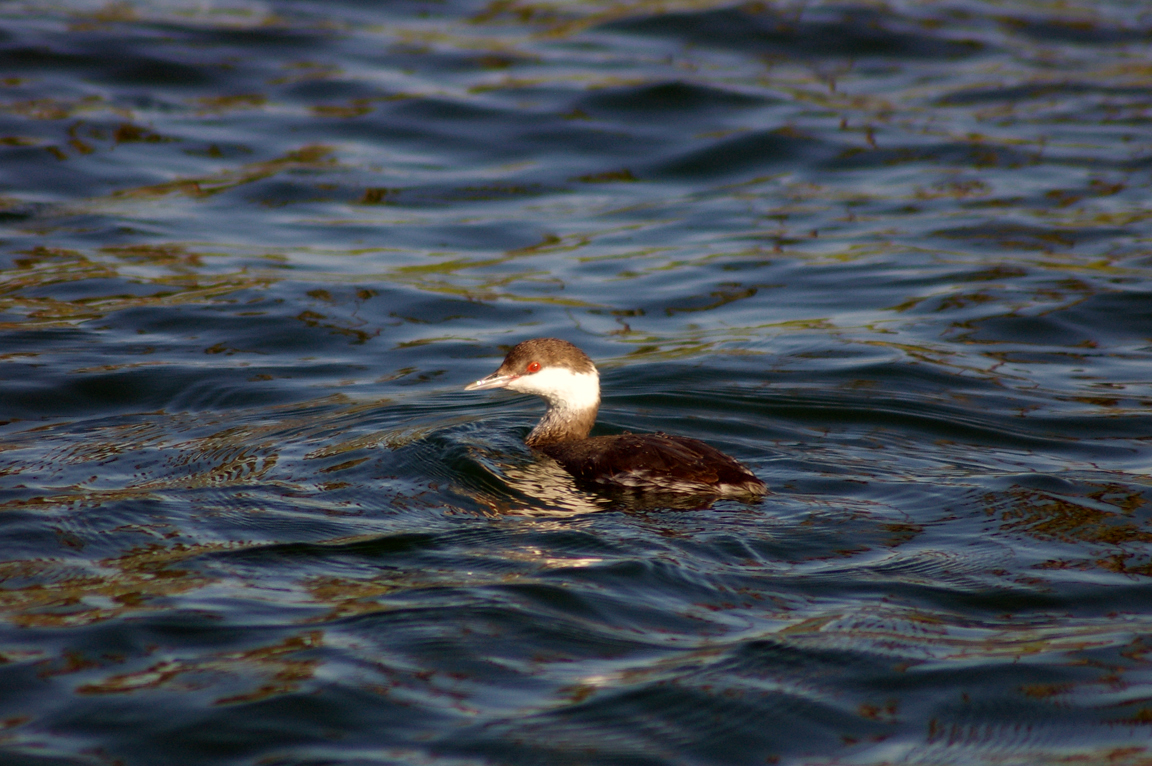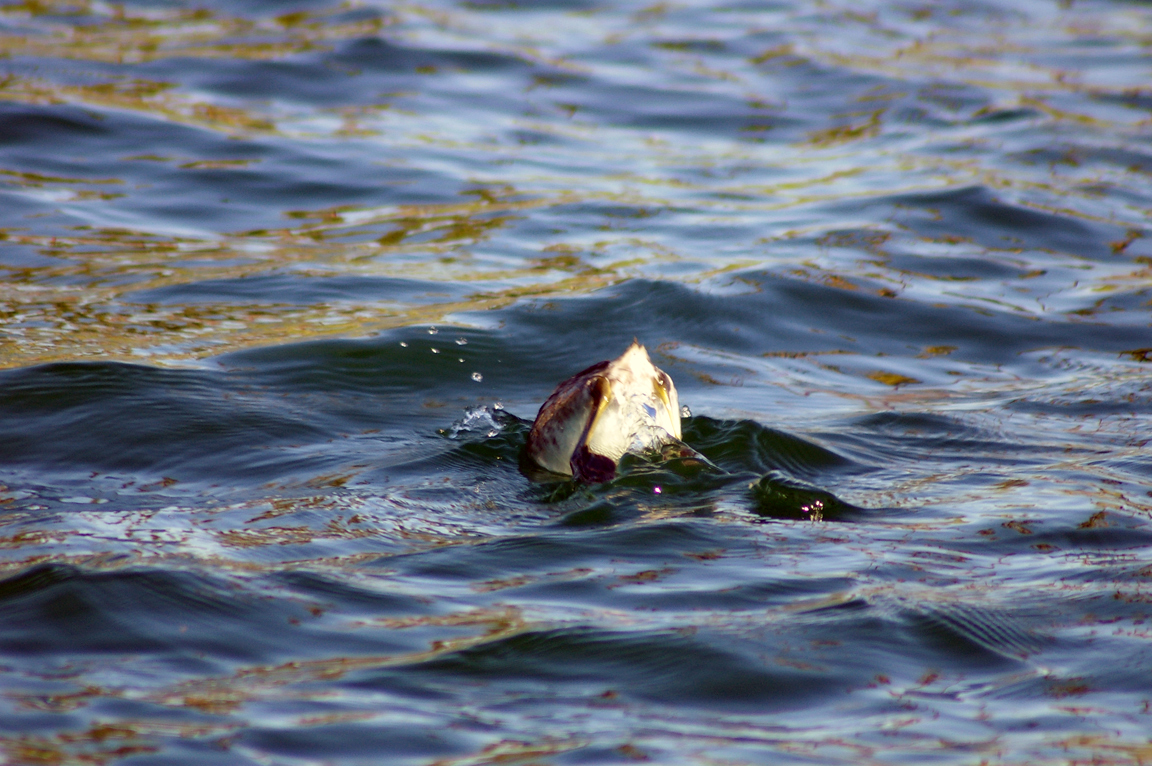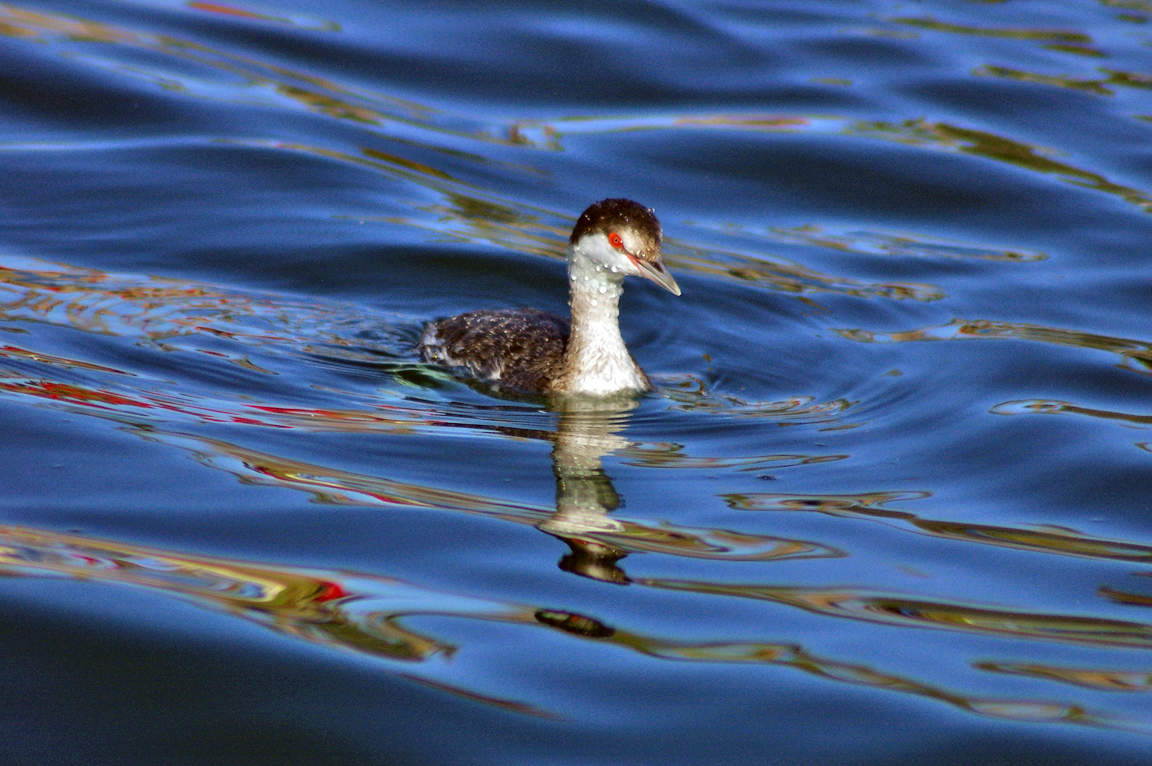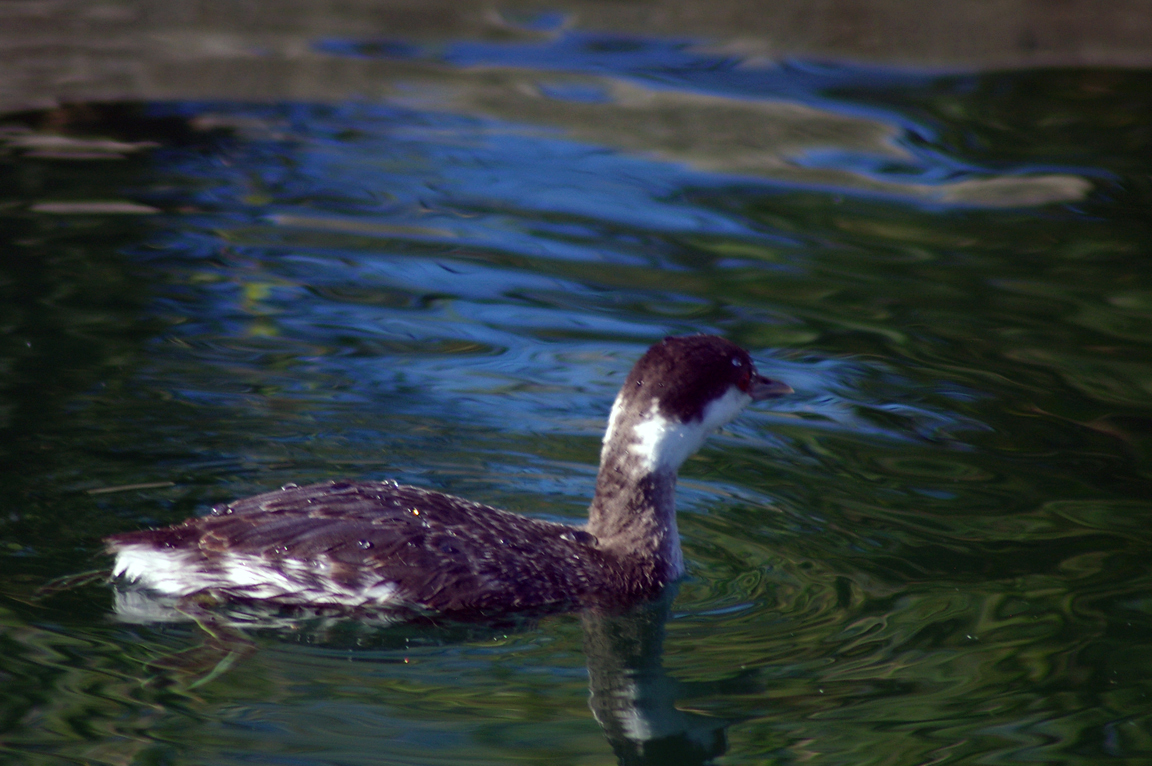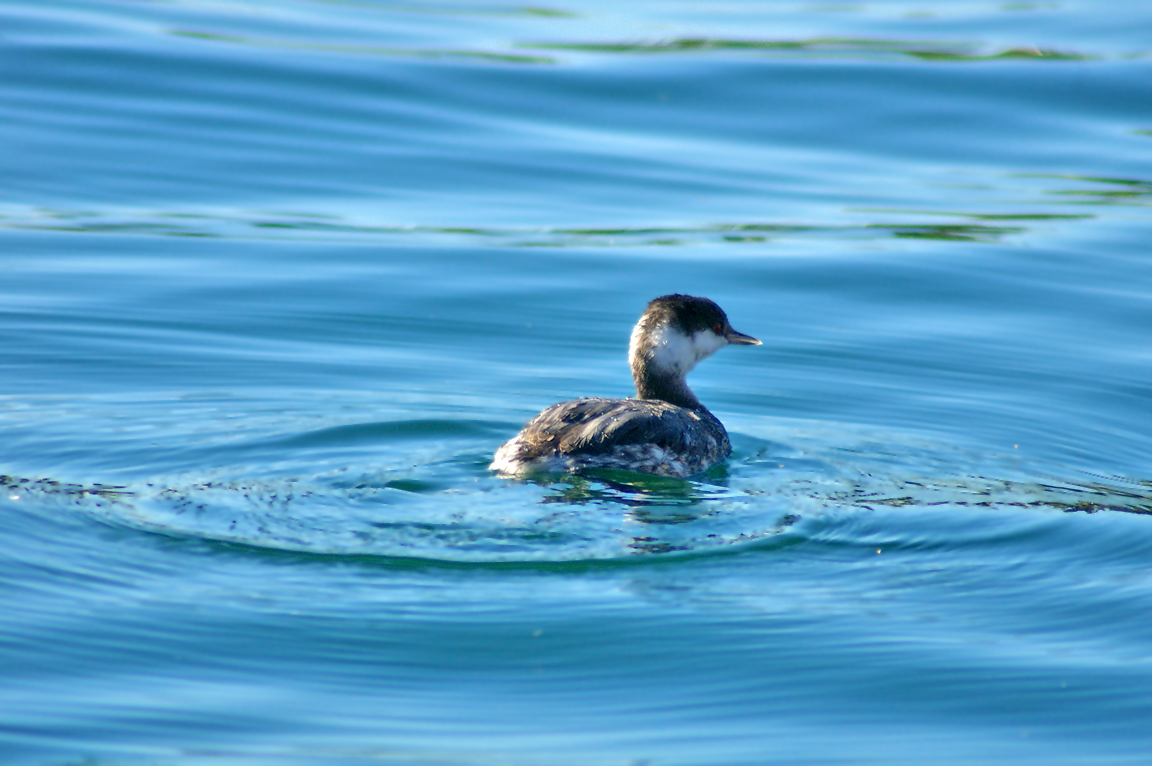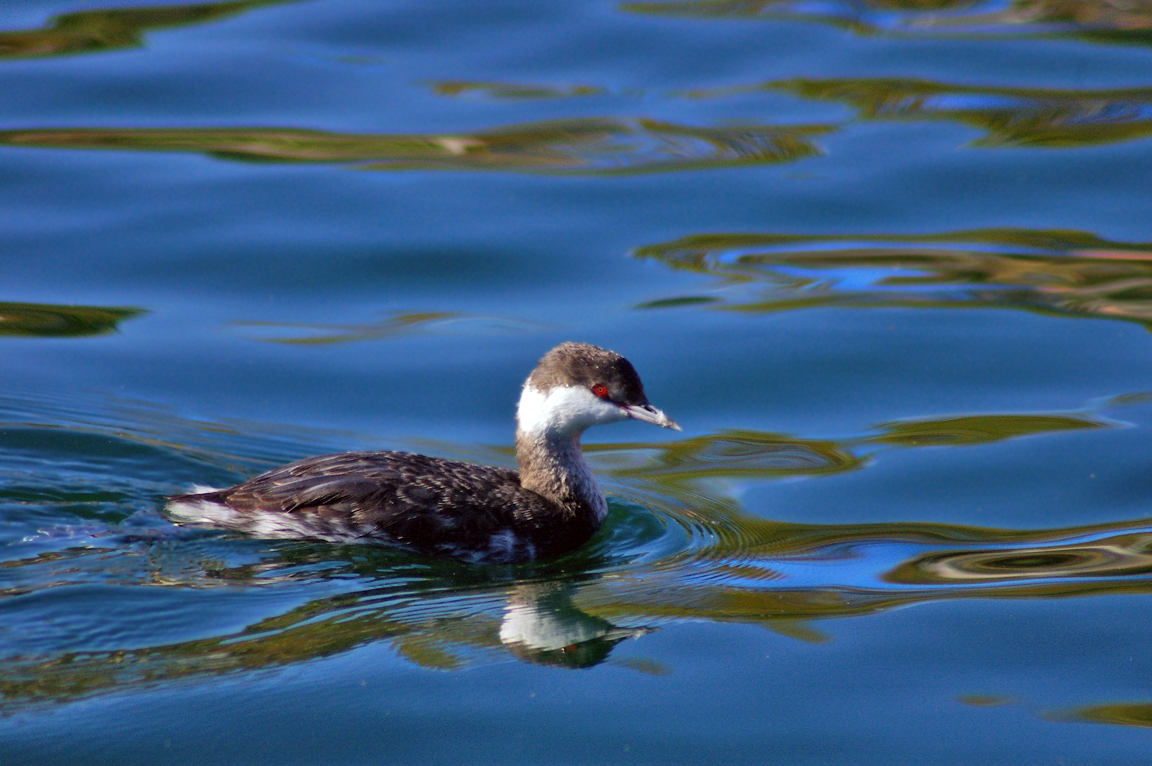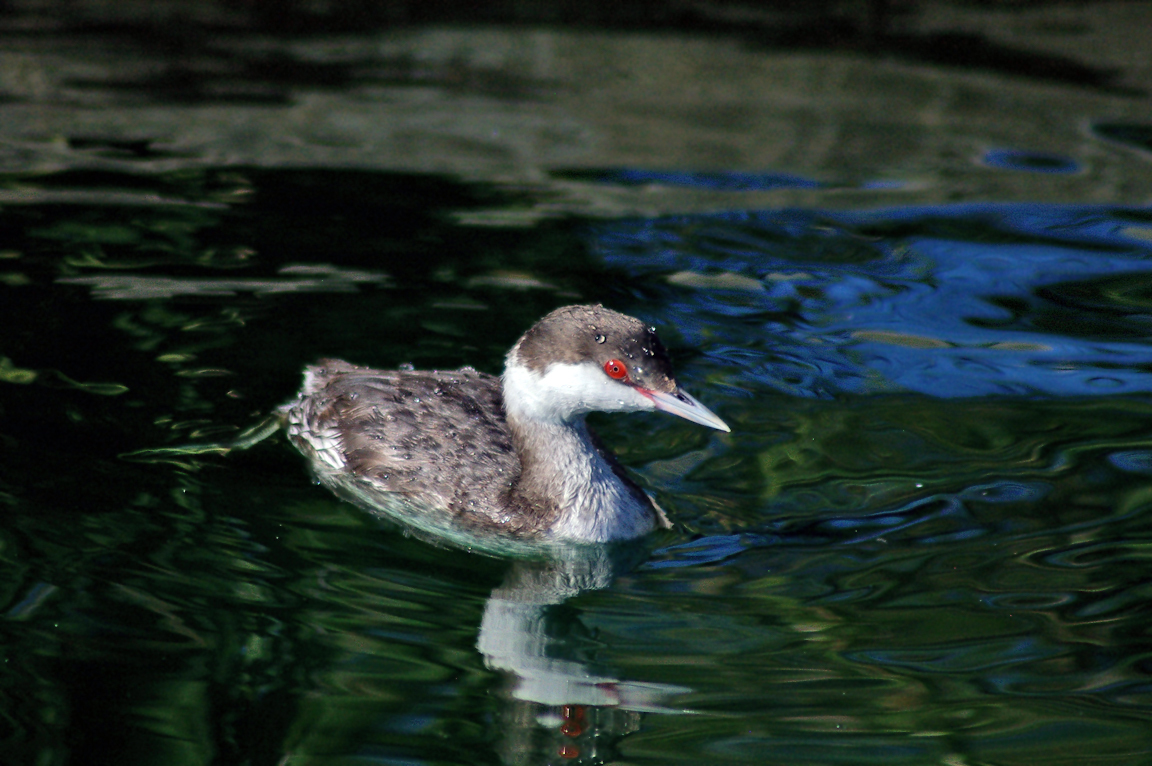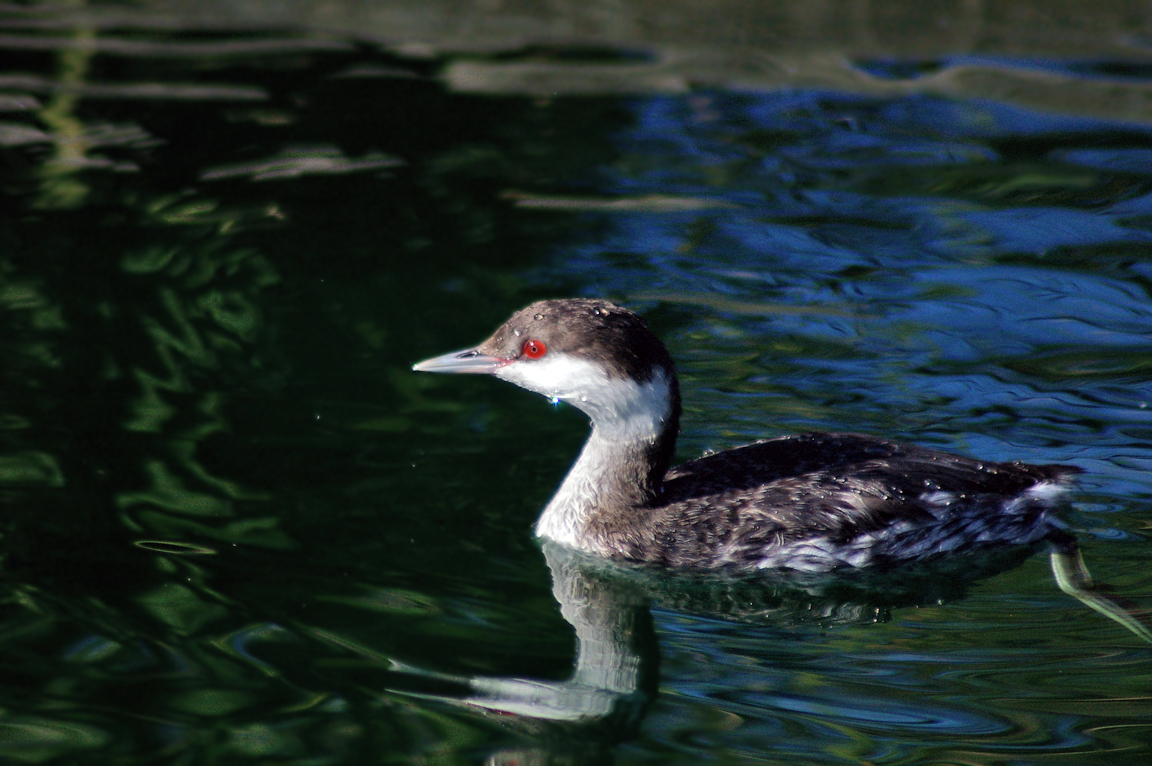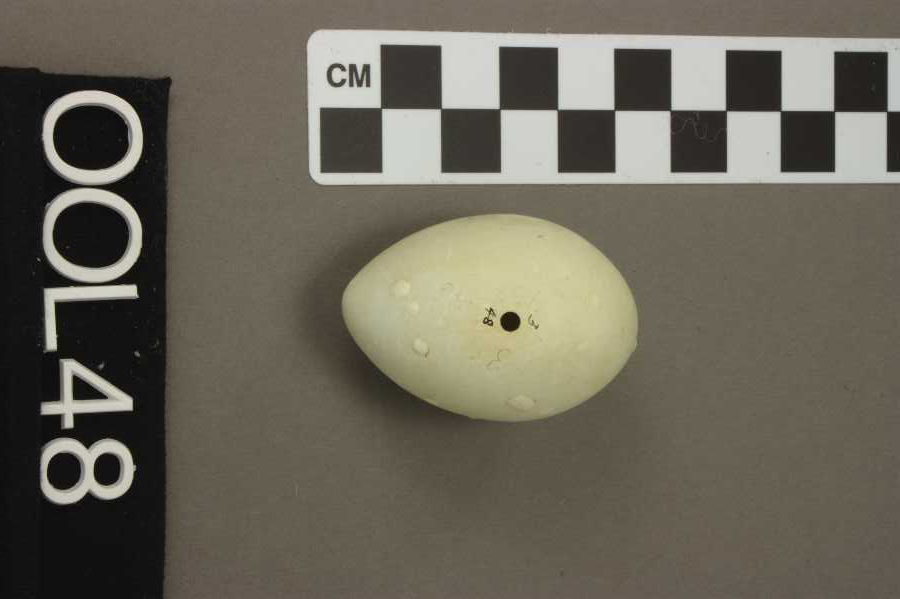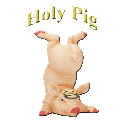|
|
|
 |
Horned Grebe
|
| Podiceps auritus | |
Familiar to most North American birders in its black-and-white winter plumage, the Horned Grebe is more striking in its red-and-black breeding feathers. Its "horns" are yellowish patches of feathers behind its eyes that it can raise and lower at will.
Interesting Information
-
Like most grebes, the small chicks of the Horned Grebe frequently ride on the backs of their swimming parents. The young ride between the wings on the parent's back, and may even go underwater with them during dives.
-
The Horned Grebe regularly eats some of its own feathers, enough that its stomach usually contains a matted plug of them. This plug may function as a filter or may hold fish bones in the stomach until they can be digested. The parents even feed feathers to their chicks to get the plug started early.
-
A sleeping or resting Horned Grebe puts its neck on its back with its head off to one side and facing forward. It keeps one foot tucked up under a wing and uses the other one to maneuver in the water. Having one foot up under a wing makes it float with one "high" side and one "low" side.
Description
Adult Description
- Size: 31-38 cm (12-15 in)
- Wingspan: 55-64 cm (22-25 in)
- Weight: 300-570 g (10.59-20.12 ounces)
- Small waterbird.
- Small head and bill.
- Bill short and thin.
- White cheek in winter.
- Reddish neck, black cheek, and yellow tuft behind eye in summer.
- Moderately long neck.
- Top of head flat in profile, with slight peak at rear.
- Bill straight, pointed, and with white tip.
- White wing patch inconspicuous in flight.
- Eyes red.
Sex Differences
Sexes similar.
Immature
Immature like winter adult.
Breeding adult (Alternate Plumage)
Bright patch of feathers behind eyes. Black, fan-shaped facial feathers. Lores, neck, breast, and flanks chestnut. Crown and back blackish. Belly dingy white.
Nonbreeding adult (Basic Plumage)
Black-and-white overall. White cheeks extending backward to nape. Black line down back of neck. Crown dark. Lores whitish or gray. Whitish neck may be dusky at base.

Photo taken from: The Sibley Field Guide by David Allen Sibley
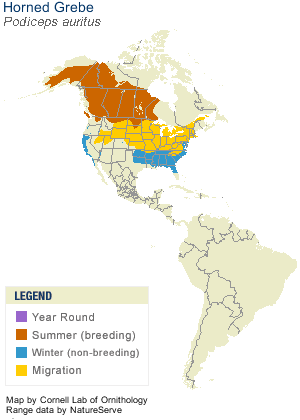
© 2003 Cornell Lab of Ornithology
|
Habitat |
|
Breeds on small to moderate-sized, shallow freshwater ponds and marshes. Winters along coasts and on large bodies of water. |
|
Behavior |
|
Dives underwater for food, in open water and among aquatic vegetation. Picks insects off water surface. |
|
Food |
|
Aquatic insects, fish, crustaceans, and other small aquatic animals. |
Taxonomy
| Kingdom: | Animalia |
| Phylum: | Chordata |
| Subphylum: | Vertebrata |
| Class: | Aves |
| Order: | Podicipediformes |
| Family: | Podicipedidae |
| Genus: | Podiceps |
| Species: | Podiceps auritus |
| Subspecies: | Podiceps auritus auritus |
| Podiceps auritus cornutus |
Similar Species |
|
|
Bird Sound |
|
Calls a loud, nasal "aaarrrh" descending in pitch, and a pulsing trill. Usually silent in winter. |
|
Eggs look like this |
|
Photo taken from: ARCTOS Collaborative Collection Management Solution |
|
Bird Sound |
|
Calls a loud, nasal "aaarrrh" descending in pitch, and a pulsing trill. Usually silent in winter. |
